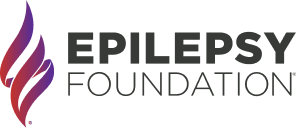Childhood Epilepsy Centrotemporal Spikes (Benign Rolandic Epilepsy)

Childhood Epilepsy with Centrotemporal Spikes is also Known as Benign Rolandic Epilepsy or Benign Rolandic Epilepsy with Centrotemporal Spikes
What is Childhood Epilepsy with Centrotemporal Spikes?
This syndrome is known by two other names:
- Benign rolandic epilepsy of childhood (BREC)
- Benign rolandic epilepsy with centrotemporal spikes (BECTS)
The name derives from the rolandic area of the brain, which is the part that controls movements. The term “benign” refers to the fact that most children outgrow these seizures by adolescence. The official modern name is “childhood epilepsy with centrotemporal spikes” or CECTS. Yet, many people still just use the term benign rolandic epilepsy to refer to this syndrome.
Seizures in CECTs can occur when the child is awake or during sleep. Seizures that begin during wakefulness involve twitching, numbness, or tingling of one side of the face or tongue. These symptoms can interfere with speech and may cause drooling. The child remains fully aware. These seizures are typically brief, lasting no more than 2 minutes in most cases, and are usually infrequent.
Seizures that come on when the child is sleeping may start with twitching of one side of the face, but often progress to a generalized tonic-clonic seizure. They typically are seen shortly after the child goes to sleep or just before they wake up. They can also be seen during daytime naps.
Other than seizures, most children are otherwise developing normally.
Learn More:
Contact Our HelplineWho gets it?
This syndrome accounts for about 15% of all epilepsies in children.
- The average age when these seizures begin is about 6 to 8 years old, but they may be seen in children from age 3 to 13. They are a bit more likely to affect boys.
- Children with CECTS generally have normal intelligence, which is not affected by the seizures. Much less commonly, children may have learning difficulties and behavioral problems during the period of time that they have seizures. The problems typically disappear once the seizures stop and the EEG (electroencephalogram) goes back to normal.
- The syndrome is more common in children who have close relatives with epilepsy. Although in most cases it is seen in those without any other affected family members.
What causes CECTs?
The cause is unknown.
How is CECTS diagnosed?
Doctors diagnose CECTS based on the description of the seizure. They may also gather information from tests such as:
- EEG (electroencephalogram): Children with CECTs have spikes on their EEG in the centrotemporal regions of the brain. These findings help confirm the diagnosis.
- MRI (magnetic resonance imaging): This test is usually normal in children with CECTS. It is often not needed if the history and EEG are very typical.
Example of an EEG in a child with CECTS

How is BREC/BECTS treated?
Because the majority of children have infrequent seizures, many do not take any seizure medicines for this type of epilepsy. Medication may be prescribed if a child has daytime seizures or frequent seizures. Medicine can also be considered if there are very frequent discharges on the EEG in sleep, in a child with typical seizures and a learning disorder, or some cognitive problems.
The seizures usually can be controlled by any of the common seizure medicines. The most commonly used medication is levetiracetam (Keppra). Other medicines including oxcarbazepine, carbamazepine, gabapentin, zonisamide or lacosamide (Vimpat) may also be used.
In most cases, seizures respond well to antiseizure medications.
What's the outlook for persons with CECTS?
Most children stop having seizures within 2 to 4 years after they begin. Medicines can be withdrawn under the guidance of the treating physician without seizure recurrence. In almost every case, complete remission is seen by age 15. Children remain developmentally normal.
Resources
- International League Against Epilepsy (ILAE) on childhood epilepsy with centrotemporal spikes
- National Organization for Rare Disorders (NORD) on benign rolandic epilepsy
Learn More:
Find Your Local Epilepsy FoundationResources
Epilepsy Centers
Epilepsy centers provide you with a team of specialists to help you diagnose your epilepsy and explore treatment options.
Epilepsy Medication
Find in-depth information on anti-seizure medications so you know what to ask your doctor.
Epilepsy and Seizures 24/7 Helpline
Call our Epilepsy and Seizures 24/7 Helpline and talk with an epilepsy information specialist or submit a question online.
Tools & Resources
Get information, tips, and more to help you manage your epilepsy.


